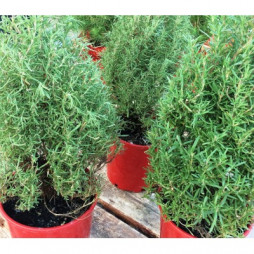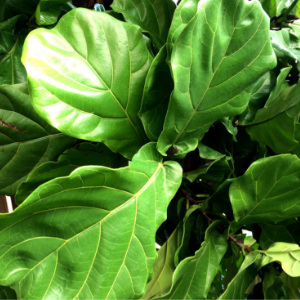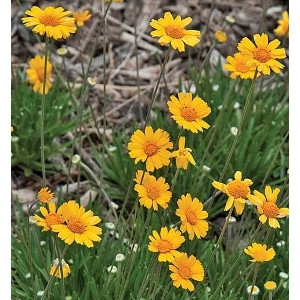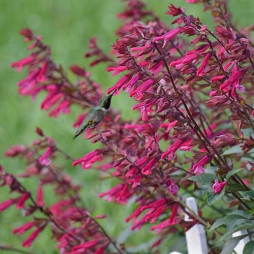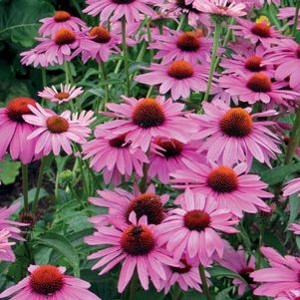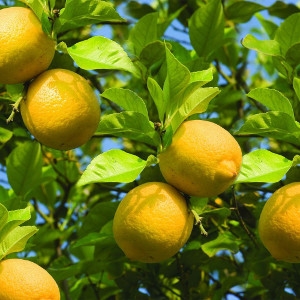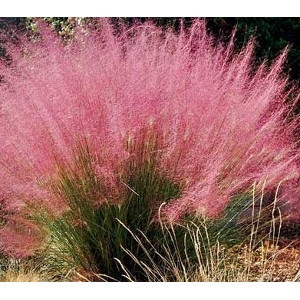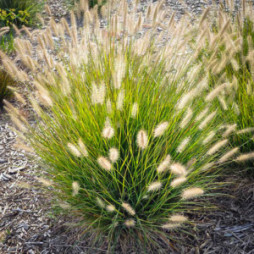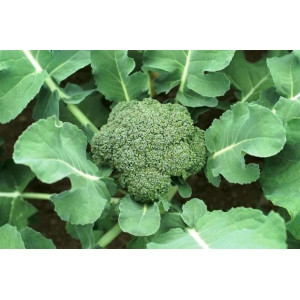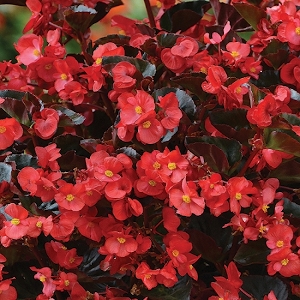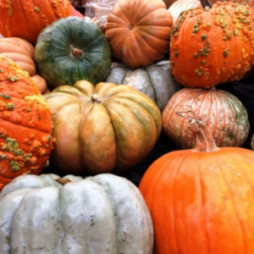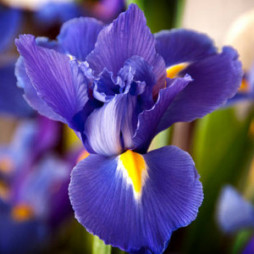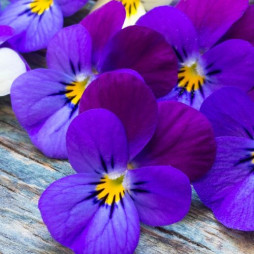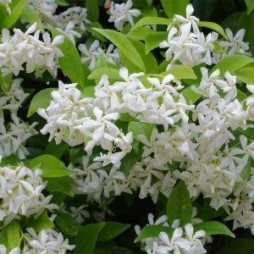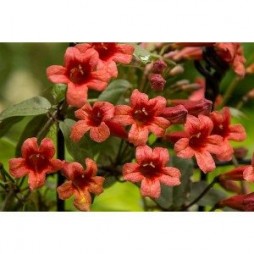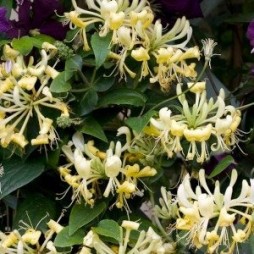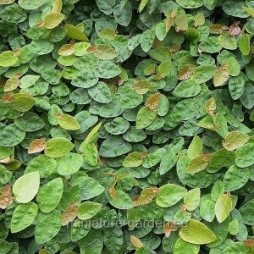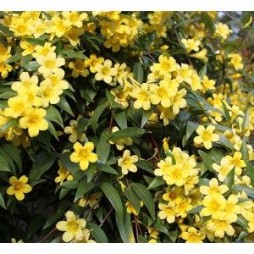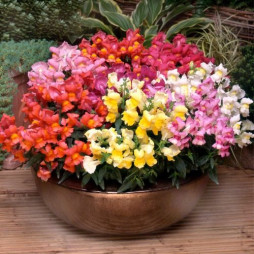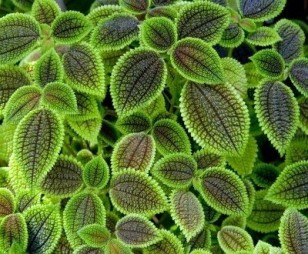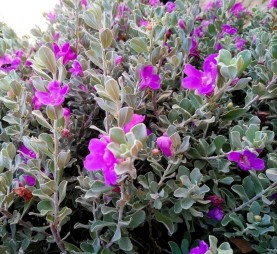Product Catalog
Description
With Christmas right around the corner, you may be looking for another decorating idea, or you live in a small apartment and just don’t have the room for a full size Christmas tree. Of late, rosemary Christmas trees plants have become popular items. Not only is rosemary used as a festive ornamental Christmas tree for the season, but it is predominantly disease and pest resistant, aromatic, a culinary treasure, and responds beautifully to pruning to maintain the shape. Additionally, a rosemary tree for Christmas can be planted in the garden to wait the following holiday season while maintaining its role as an indispensable herb. Keeping a rosemary tree for Christmas is extremely simple. Prune to maintain the shape and mist the herb after pruning. Keep the plant in a sunny window or outside in full sun. Keeping rosemary for Christmas healthy requires regular watering. Rosemary plants are drought tolerant, but this doesn’t mean they need no water.
Rates
Please contact us for current pricing and availability.
Description
A Fiddleleaf Fig is a flowering plant from the mulberry and fig family. It is native to western Africa where it grows in lowland tropical rainforests. The plant gets its name from the leaves which have a broad apex and narrow middle and resemble a fiddle. It serves well as a houseplant in temperate areas, where it usually stays shorter and does not flower or bear fruit. Grows best in bright but indirect sunlight.
Rates
Please contact us for current pricing and availability.
Description
With yellow, daisy-like flowers during spring and early summer on thin wiry stems that wave in the breeze and flag down passing butterflies, this native perennial is also known as hymenoxys. The long narrow leaves of gray-green foliage form a clump from which the flower stems arise. When in full bloom, Four Nerve Daisy can appear covered with flowers and the individual flowers are long lasting. The bright-yellow flowers are mostly found from February through early summer, although it has been known to show flowers almost every day of the year.
Rates
Please contact us for current pricing and availability.
Description
If you're looking for ways to add bright color to your landscape, salvia can't be beat. Also known as sage, salvia comes in a variety of colors including blue, lavender, red, pink and white, and are known for their fragrant foliage. There is an amazing diversity of varieties, each one with its own level of hardiness but they all have one thing in common--they are gorgeous! Most forms of salvia can be counted on to produce tall spikes or an abundance of nectar-rich blooms favored by butterflies and hummingbirds. They thrive in hot weather and are relatively drought and disease resistant. Heights vary by variety, but most grow between 18 and 36 inches tall. Salvia is deer resistant
Rates
Please contact us for current pricing and availability.
Description
One of the best flowering perennials for a sunny location, echinacea, more commonly known as the coneflower, is very easy to grow. These heat- and drought-resistant beauties develop wave after wave of blooms all summer long. Plus, coneflowers are at the top of the list for hungry butterflies and other pollinators that will flock to your flowerbeds to enjoy the nectar-rich blooms. A variety of birds love them as well. Coneflower colors include pink, red, orange, white, and yellow. Most varieties have large single-petaled blooms and grow 18 to 36 inches tall.
Plant coneflowers in a spot that receives at least 6 to 8 hours of direct sun each day. They aren't too fussy about soil type, but prefer a rich, well-drained location. Remove the faded flower heads as they appear to encourage the development of additional flower stalks. Coneflowers also make a beautiful statement in containers.
Rates
Please contact us for current pricing and availability.
Description
Growing wild in Japan, China and Korea, Japanese maples can create a focal point to really set off your home’s curb appeal by standing alone as a single spectacular centerpiece, focal point, or accent, as well as work together to provide a dramatic backdrop. Found in the understory of woodlands where sunlight is dappled, a location in partial shade is fitting. Providing the right amount of light can be a balancing act. Too much light can damage delicate leaves but for best color, most maples need a location with part day's sun.
Rates
Please contact us for current pricing and availability.
Description
Just a handful of states in the US can claim climates that are suitable for growing citrus trees and Texas is one of them. They are best planted in the late spring after the weather has warmed up and there is no danger of frost. They will provide wonderful fruit and make a beautiful and fragrant when blooming, to your landscape.
Citrus trees need plenty of rich, well-drained soil and ample sunlight as well as 40 to50 inches of rain to get an excellent harvest. With Central Texas averaging slightly under that amount annually, it will need supplemental watering for the life of the tree. Avoid the trees sitting in saturated water as that will cause it to quickly die. The unpredictable winter weather in this area does sometimes create challenges since it can affect the maturity time of the fruit and damage or kill some trees when temperatures fall below 28 degree so insure the tree is protected during cold weather. Citrus trees flower and produce fruit on both new and previous year’s growth so wait to prune until after they have bloomed in the spring.
Rates
Please contact us for current pricing and availability.
Description
With a light, airy pink display that is worthy of a fairy princess, pink mulhy grass is an easy-to-grow, ornamental grass which provides gorgeous late-season color. Its delicate pink plume seed heads completely envelop the foliage in late summer, swaying gently in the late summer and fall breezes. They can be planted en masse, in a patio container or placed between shrubs in the landscape. This beautiful but rugged perennial is deer resistant, thrives in nearly any soil, and tolerates heat, humidity and even drought conditions.
Plant your pink mulhy grass in any type of soil, so long as it drains well. Several can be planted together but space them at least 2 feet apart for an eye popping affect. The lighting should be as bright and sunny as you can find in your garden or landscaping. With the exception of light trimming if you wish, this grass thrives on cruel neglect. It tolerates rocky soil where there is little organic matter, merciless sun and stretches of dry weather.
Rates
Please contact us for current pricing and availability.
Description
The cascading leaves on this plant have a fountain-like appearance, thereby giving the grass its name. Fountain grass is a mound-forming, perennial ornamental grass and a garden and landscaping favorite, as the care of fountain grass is easy. Clump-forming grasses grow in mounds or clumps, making them ideal for many areas without becoming invasive. It can be used alone as a specimen plant or in a border alongside other perennials.
Blooming of its foxtail-looking flowers generally takes place from late summer through the fall. The small flowers of fountain grass are tan, pink or purple. During fall and throughout winter, this plant will also reward growers with spectacular foliage displays. There are different types of fountain grass from which to choose, ranging in size from 12 inches to 3 feet. One of the most common varieties is dwarf fountain grass and its light tan blooms turn pinkish brown in the fall. Purple fountain grass has both purple foliage and blooms and is another popular landscaping option.
Rates
Please contact us for current pricing and availability.
Description
These mini trees are notorious for being pushed off the plates of kids around the world, but broccoli's reputation as one of the healthiest veggies still rings true. If you are trying to eat healthier, broccoli should be at the very top of your grocery list. Many studies have suggested that increasing consumption of broccoli decreases the risk of obesity, diabetes, heart disease, and overall mortality. It may also promote a healthy complexion and hair, increased energy, and overall lower weight. Broccoli grows best in the cooler season and prefers temperatures between 65 and 75 F. When planting broccoli, make sure the rows are 3 feet apart, with the plants 1 1/2 to 2 feet apart. Growing broccoli is done best in soils that are well-drained with a texture between sandy and clay loam. The plants require lots of sunshine for the most part, but these are forgiving plants and will also tolerate partially shaded locations of the garden, which is nice for those lacking full sun.
Rates
Please contact us for current pricing and availability.
Description
One of the most versatile plants that is easy to care for and packs a powerful punch of color, begonias make it easy to dress up any shady patio, deck or flowerbed.. The most popular member of the family is commonly called wax begonia. These beautiful and charming plants grow 8 to 10 inches tall and bear pink, red, or white blooms atop either green or bronze foliage. Wax begonias are so adaptable they thrive in partial sun and shade and work just as well in the flower border as they do in pots, planters, and window boxes. They have almost no insect or disease problems and their blooms are prized by butterflies and hummingbirds.
Rates
Please contact us for current pricing and availability.
Description
Come and check out our colorful and festive pumpkin patch at the nursery that is worthy of a visit from the Great Pumpkin! There are pumpkins of all sizes and colors that are perfect for decorating or carving for jack o’ lanterns. In addition to the traditional orange, there are green and white pumpkins as well as the enchanting Cinderella variety. A wide variety of gourds are perfect for decorating the front porch or inside the house to welcome the fall season. There is also fun Halloween décor available so come by and see the large variety of pumpkins and gourds available and maybe even take a photo in the patch.
Rates
Please contact us for current pricing and availability.
Description
Fall is the time to start preparing for early spring color. Arriving in October at Shoal Creek Nursery are bulbs for tulips, daffodils and irises. Tulip and iris bulbs come in a variety of colors that will brighten any landscape. Plant all one color, mix different colors or use them to create broad strokes of color. They are also very striking in pots and planters. Daffodils come in yellow and white with yellow centers and their blooms make a bold statement that the arrival of spring is on the horizon.
Rates
Please contact us for current pricing and availability.
Description
Violas are versatile plants with delicate yet colorful blooms that work well both indoors and out. Their size, compactness and long flowering period are perfect for containers. Trailing varieties are exquisite in hanging baskets and tumbling over the edge of containers and window boxes. The scent of violas will be more noticeable when they’re indoors.
Outdoors, the mounded plants make a lovely edging along a path or to define a garden border.
Combine them with other cool weather lovers like snapdragons and dianthus or tuck them between spring flowering bulbs such as tulips and daffodils to fill the space as the bulbs fade. Violas are primarily cool-season bloomers and for perfect bridging autumn and spring where they can remain in bloom throughout the winter.
Rates
Please contact us for current pricing and availability.
Description
In the early spring of Texas, the air is filled with the intoxicating aroma of the sturdy Mountain Laurel tree. Native to Texas and Northern Mexico, their fragrant violet-blue blooms are reminiscent of artificial grape flavoring and are a favorite of hummingbirds and bees. They are evergreens so they keep their beautiful dark green leaves all year. Mountain Laurels make a great addition to your landscaping whether it be a patio, yard or outdoor courtyards.
Although slow-growing, Mountain Laurel is one of the best trees for any landscape. They can be shaped to resemble a shrub or allow them to grow into a small size tree. A beautiful, informal hedge can be created by planting a row of Texas Mountain Laurel and letting the shrubs develop without shearing. The dense evergreen foliage can also be used to screen an unattractive view. They prefer full sun and are extremely drought tolerant so once established, very little watering is required.
Rates
Please contact us for current pricing and availability.
Description
Few plants are as well-known for their intoxicating fragrance as confederate jasmine. Confederate jasmine (also called star jasmine) is a beautiful flowering vine that offers sweetly fragrant white flowers in late spring and summer. Its shiny, dark green leaves are a wonderful accent to the blooms and provide good garden interest, even when confederate jasmine is out of bloom. Because confederate jasmine is fast growing, it's an excellent choice for creating privacy, covering a fence, or adding a beautiful backdrop to the garden. . If you have areas where there's nothing to climb, confederate jasmine can also be grown as a lovely weed-smothering ground cover.
Rates
Please contact us for current pricing and availability.
Description
Trumpet vine, occasionally called trumpet flower, is a beautiful native, semi-evergreen, climbing, woody, vine. The name is derived from the shape of the pith in the vine’s stem when viewed in cross-section. The flowers are trumpet shaped, the outside a reddish orange and the throat bright yellow with the blossoms appearing as early as April. Flowering occurs from mid spring to late summer. It is a perennial and in mild climates an evergreen. Trumpet vines are robust and vital and their care includes little more than occasional pruning if you grow these beauties in the best possible location. Ideal cross vine growing conditions include a sunny location with acidic, well-drained soil. It will also grow in partial shade but the flower growth might be diminished.
Rates
Please contact us for current pricing and availability.
Description
Everyone recognizes that lovely fragrance of a honeysuckle plant and the sweet taste of its nectar. Honeysuckles are heat-tolerant and wildly attractive in any garden. A honeysuckle plant is a great addition to any landscape and will draw abundant wildlife with its sweet, yellow to bright-red blossoms. Hummingbirds adore honeysuckle vine, and after growing one you will, too. These easy-care climbers offer attractive clusters of blooms in a wide range of shades. The tube-shape flowers look great mixed in with a variety of shrubs, perennials, and annuals.
Rates
Please contact us for current pricing and availability.
Description
There’s no mistaking the sweet fragrance of wisteria as it perfumes the garden – it’s beautiful violet-blue or lavender blooms cascading from the vine in mid-late spring. With its climbing agility and fast growth habits, wisteria can completely transform a garden in just a few years, becoming a breathtaking shade cover, privacy screen, or focal point. The most important factor to consider when growing wisteria is location. Wisteria has the greatest impact when trained to grow on pergolas, arbors, and other strong overhanging supports so the long flower clusters can hang freely, creating a stunning floral canopy. It can also be trained onto wires mounted on fences or stone walls or draped over garden benches and arched entryways.
Rates
Please contact us for current pricing and availability.
Description
Admirers appreciate this evergreen climber’s rapid growth, which can make it invaluable as a ground cover and a reliable concealer of ugly fences and walls. It is a native of East Asia and is found on Japan’s southern islands, in eastern China, and in Vietnam. Indoors or out it has a special talent for topiary, happily covering tiny or huge wire forms to create living sculptures of animals or geometric shapes.
Rates
Please contact us for current pricing and availability.
Description
Putting on a spectacular display of masses of fragrant yellow flowers in the spring, Carolina Jessamine (also known as yellow jasmine) is perfect for planting on trellises and arbors, along fences or under trees with loose canopies. The glossy leaves stay green all year, providing dense coverage for the supporting structure or can even be used as a ground cover. This is a relatively low maintenance plant, requiring only occasional pruning to remove unwanted growth.
Rates
Please contact us for current pricing and availability.
Description
Growing snapdragons provides cool season color and a mid-sized plant to balance tall background plants and shorter bedding plants in the front. Numerous varieties of snapdragon exist with dwarf, intermediate and tall flowering stems that provide a wide range of colors to work with. Height of the snapdragon may reach 3 feet or as short as 6 inches. This fragrant specimen can handle frost and needs to be kept keep moist for the first few weeks. Once established, snapdragon care includes regular watering. Water near the crown of the plant and avoid overhead watering to keep your snapdragon healthy. Once established, let soil dry about an inch deep before watering. Remove spent blooms and mulch is appropriate.
Rates
Please contact us for current pricing and availability.
Description
Native to the tropical forests of Central and South America, the Friendship plant bears its name due to the rapid rooting of cuttings that can be established for new plants to give to friends and family. Featuring quilted leaves of apple green with deep bronze veins and ease of care, the Friendship plant makes it a joy to grow indoors. This adorable plant will get about 6 inches high and rarely up to 12 inches. With proper care, this little gem might even favor you with its pale pink flowers.
Rates
Please contact us for current pricing and availability.
Description
Native to areas of Texas and Mexico, Texas sage features gorgeous silvery foliage and attractive lavender-purple flowers on and off from spring, through the summer, and into autumn.) The flowers attract bees, butterflies, and other pollinators. There are numerous ways to utilize Texas sage in your landscaping that will add color and beauty to your outdoors. It grows well in container on sunny decks and patios as well as garden beds, borders or hedges. Because of its drought tolerance, Texas sage is often used in xeriscaping. Prune Texas sage as necessary and any time of the year to keep the size and shape you prefer.
Rates
Please contact us for current pricing and availability.

